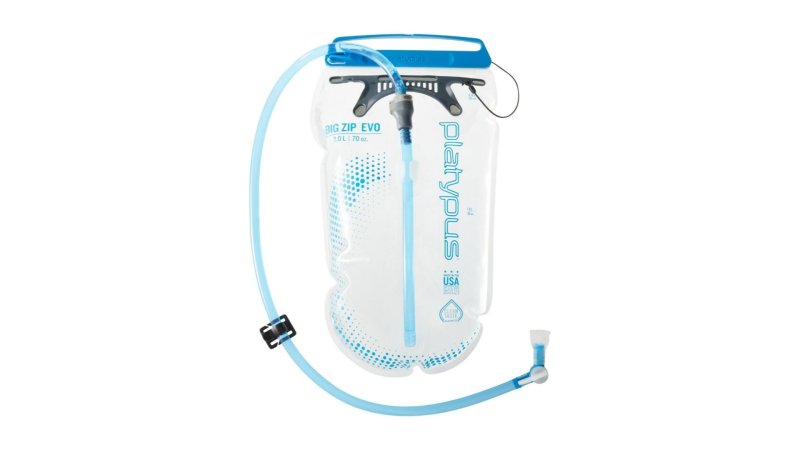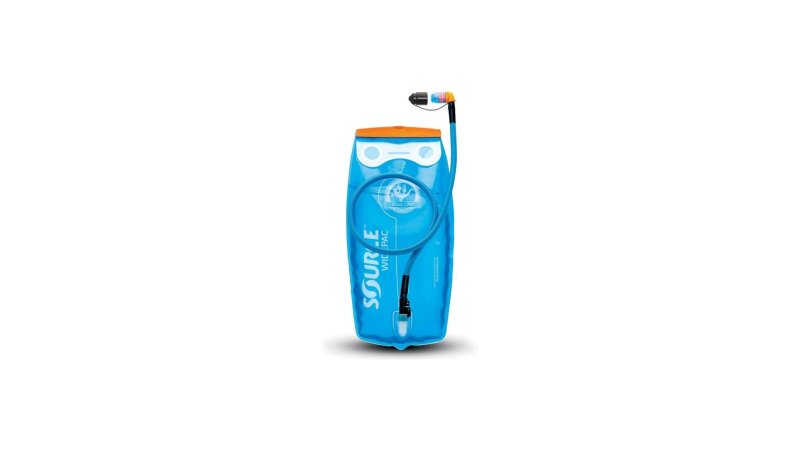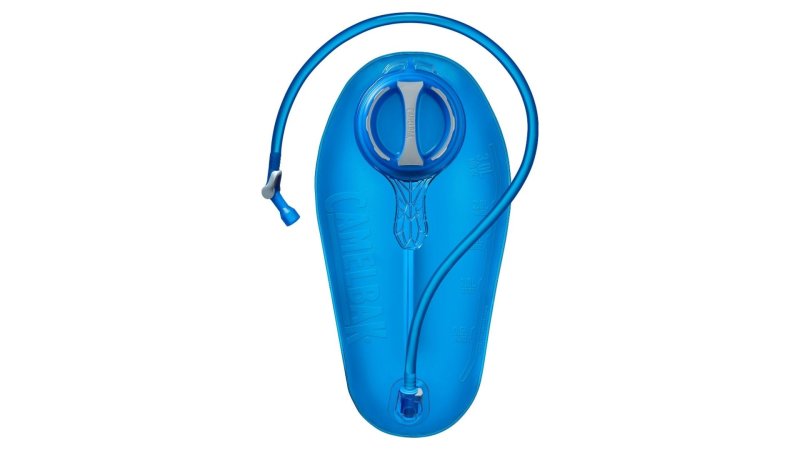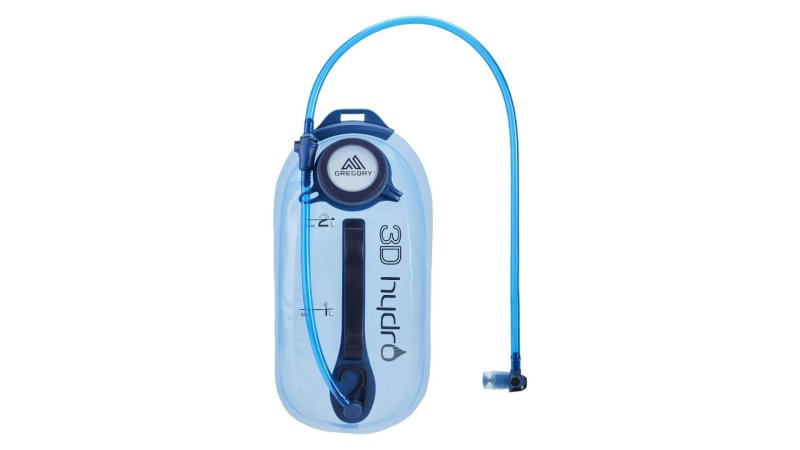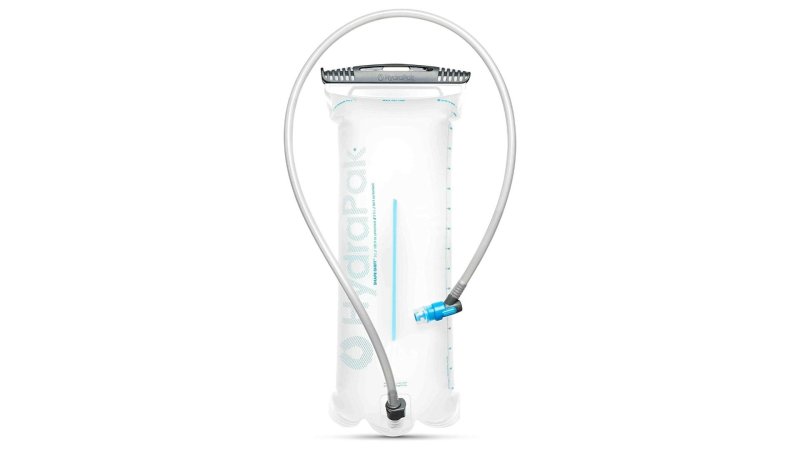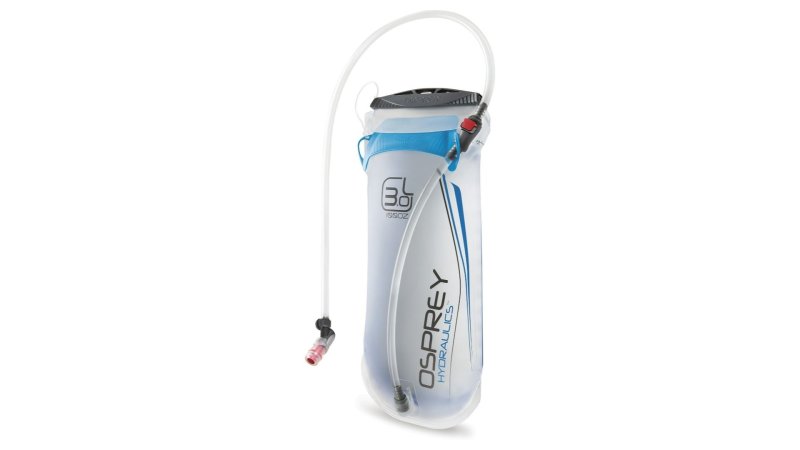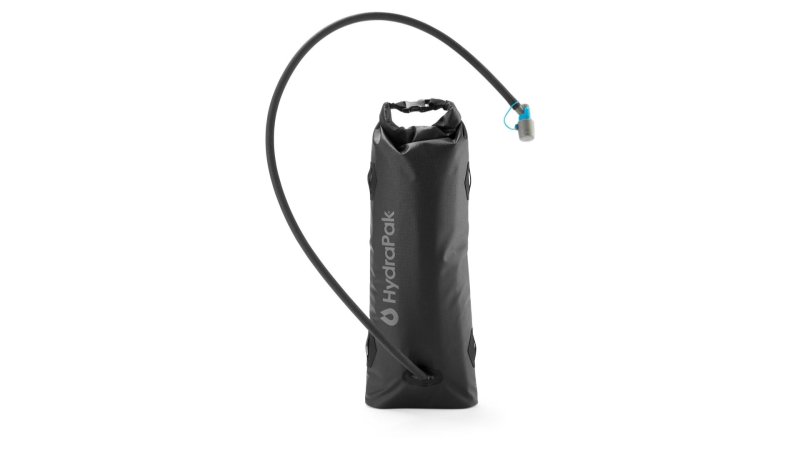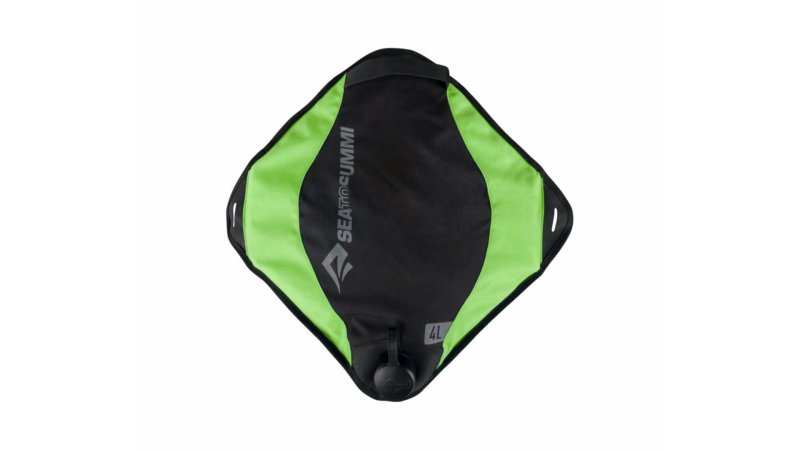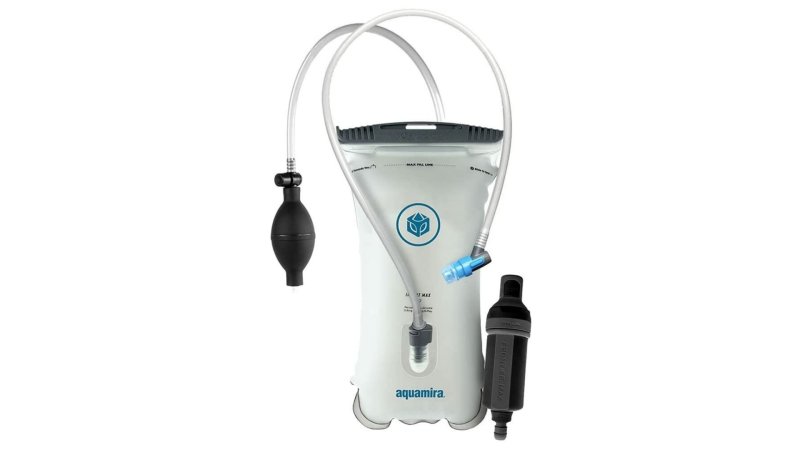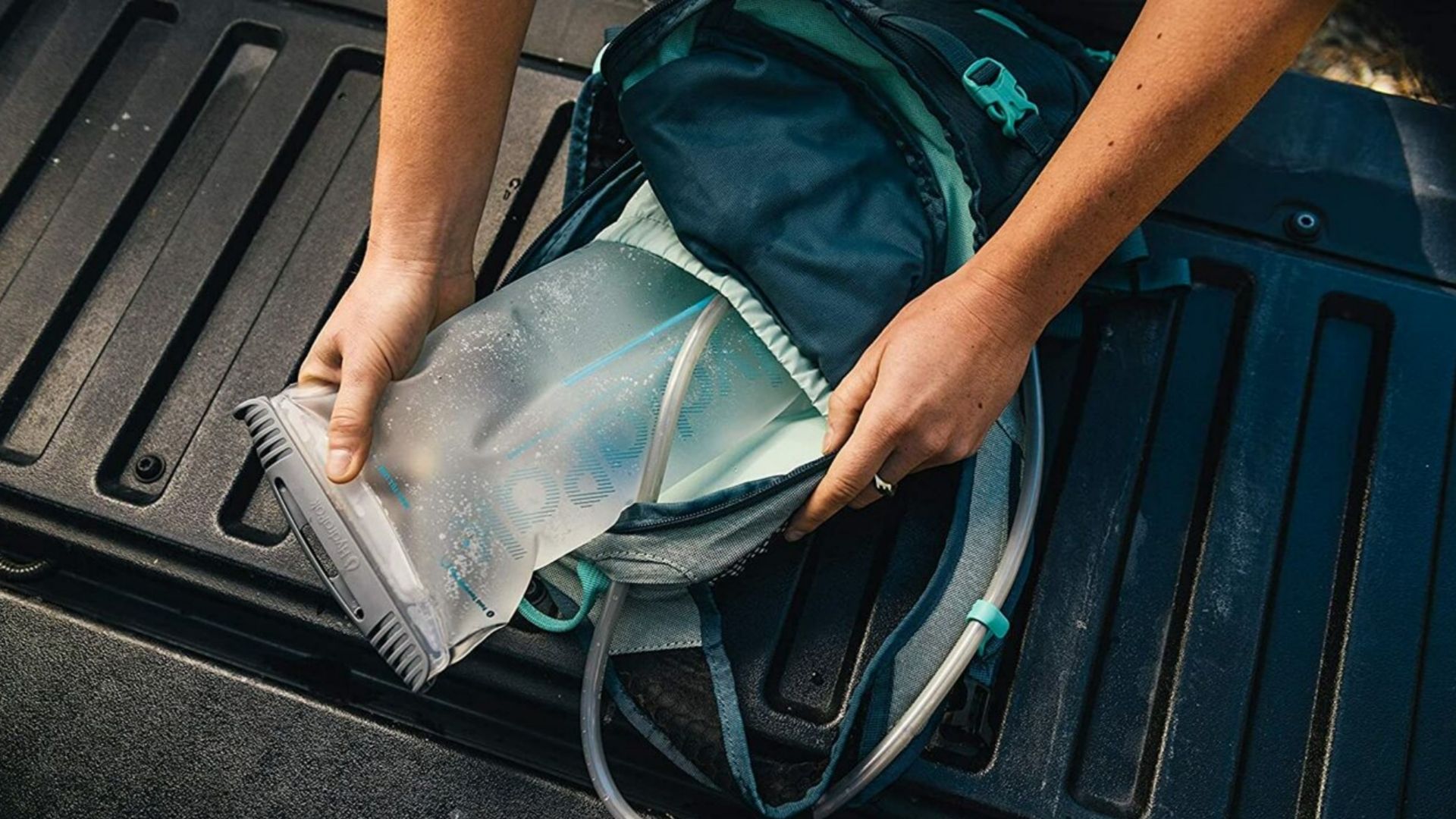

We may earn revenue from the products available on this page and participate in affiliate programs.
Drinking enough water is key to basically any outdoor activity, and there’s no better way to meet that goal than with one of the best hydration bladders on your back. Having an accessible, steady supply of water may even be what motivates you to run those extra few miles or push through the last leg of a tiring climb. The bladder market is no longer dominated by CamelBak, and there are now ample options to choose from to throw in your hydration pack, hiking, or backpacking bag.
Some hydration packs prioritize durability and ease of use, while others boast additional features, like an insulated system or easy pairing with a water filter. Whether you are looking to stay hydrated on your next ultralight trail running adventure or backcountry backpacking trip, read on for our picks for the best hydration bladders.
Best Overall
Platypus Big Zip EVO Reservoir
Pros
- Durable, puncture-resistant design
- Fast water flow
- Free of plastic taste
- Easy to fill
- Good carry handle
- Mold and bacteria protection
Cons
- Not the easiest to clean
- Ziplock feature can become hard to use
Product Specs
- Capacity options: 1.5L, 2L, 3L
- Weight (3L): 6.9 oz.
- Type of closure: Ziplock
Best Value
Source Outdoor Widepac
Pros
- Great bang for your buck
- Durable, simple design
- Free of plastic taste
- Mold and bacteria protection
- Valve cover included
- Easy to fill
Cons
- Not the easiest to clean
Product Specs
- Capacity options: 1.5L, 2L, 3L
- Weight (3L): 6.34 oz.
- Type of closure: Fold top and slide closure
Editor’s Choice
CamelBak Crux Reservoir
Pros
- Great handle, easy to fill
- High water flow
- Durable design, doesn’t leak
- Mold and bacteria protection
- Long-lasting
Cons
- Heavier than other models
- Can’t be rolled up, not the most packable
Product Specs
- Capacity options: 1.5L, 2L, 3L
- Weight (3L): 8.4 oz.
- Type of closure: Screw top
Best Durable Bladder
Gregory 3D Hydro Reservoir
Pros
- Durable design
- Very user-friendly
- Narrow profile that fits into most bags
- Body-length handle allows for easy filling
- Comes with drying hanger accessory
Cons
- Can’t be rolled up, not the most packable
- Heavier than some other models
- Smaller screw top lid than other models
Product Specs
- Capacity options: 2L, 3L
- Weight (3L): 7 oz.
- Type of closure: Screw top
Best for Lightweight Adventures
Hydrapak Shape-Shift Reservoir
Pros
- Lightweight
- Easy to fill with handle
- Easy cleaning with flipping bladder inside out or dishwasher use
- Mold and bacteria protection
- Fast water flow
- Simple to clean
Cons
- Less durable than other models Plastic taste out the bo
- Plastic taste out the box
Product Specs
- Capacity options: 2L, 3L
- Weight (3L): 5.40 oz.
- Type of closure: Fold top and slide closure
Best for Backpacking
Osprey Hydraulics Reservoir
Pros
- Rigid backplate makes it great for backpacking
- Elongated spout, good for shallow water sources
- Easy to refill
- Durable
Cons
- Heavier than other models
- Plastic taste at beginning
- Won’t fit in every pack
- Hard to clean
Product Specs
- Capacity options: 2L, 3L
- Weight (3L): 8.75 oz.
- Type of closure: Flip top and slide closure
Best Insulated Hydration System
HydraPak HydraSleeve
Pros
- Extremely durable
- Great for extreme conditions
- Very versatile
- Simple to clean
- Easy to fill with handle
Cons
- Very heavy
- More expensive than other models
Product Specs
- Capacity options: 3L
- Weight (3L): 12 oz.
- Type of closure: Fold top and slide closure
Best Big Hydration System
Sea to Summit Pack Tap
Pros
- Variety of large sizes
- Extremely light
- Compact and packable
- Durable design
- Reasonable price
Cons
- Difficult to clean
- No hydration hose
Product Specs
- Capacity options: 4L, 6L, 10L
- Weight (10L): 6.75 ounces
- Type of closure: Screw top
Best Pressurized Hydration Bladder
Aquamira Pressurized Reservoir
Pros
- Very versatile, pressurized option
- Easy to fill
- Compatible with water filter
- Simple to clean, dishwasher-safe
- Durable
Cons
- More expensive than other options
- Heavy
Product Specs
- Capacity options: 1.5L, 2L, 3L
- Weight (3L): 13 oz.
- Type of closure: Fold top with zip closure
Why you should trust us
I’m a recent convert to the hydration bladder lifestyle. Whether I’m cross country skiing, backpacking in the mountains, or on a multi-pitch rock climb, you’ll never find me without my trusty CamelBak. I used to be someone who struggled to drink enough water because I never wanted to stop whatever activity I was doing to pull out my water bottle, but that all changed once I embraced my hydration bladder. I understand what features users need in a bladder for different activities, and I pride myself on being able to find the highest quality products out there, for the most affordable price. So, when it comes to choosing the best hydration bladder, you can trust that I will lead you to the right place.
Types of hydration bladders
Durable hydration bladders
Since hydration bladders can be known for leaking, it’s important to go for a durable model. Lucky for us, most of the top-of-the-line models today are both reliable and affordable. Their thick plastic materials can handle being pressed against a hiker’s back or squished in a pack, without the plastic seams bursting.
Options like the Platypus Big Zip EVO Reservoir, the Source Outdoor Widepac, and the CamelBak Crux Reservoir are all known to be long-lasting and puncture-resistant. The HydraPak HydraSleeve is perhaps the most durable option on this list, as it can even be strapped on to the outside of a pack without getting damaged.
Ultralight hydration bladders
Hydration bladders most frequently weigh between five and 10 ounces, and while that may not seem like a large range, when you’re a marathon runner, cutting a few ounces can make a difference. Ultralight bladders can also be good for backpackers, skiers, or anyone else looking for a lightweight option. Our pick for lightweight adventures is the Hydrapak Shape-Shift Reservoir, which weighs only 5.40 ounces, though it does sacrifice some durability to cut those few ounces.
Keep in mind that, while you can lose a few ounces in your bladder, the water it’s carrying is the weight you’ll notice. If you are looking to cut down on weight, try only keeping a liter or two of water in your bladder and filling up every couple miles, if you have water sources available.
Insulated hydration bladders
Have you ever heard someone complain about taking a hydration bladder snowmobiling or skiing, only to have the water freeze before being able to drink any? I sure have, and that’s why I find insulated bladders so useful. In addition to keeping your water from freezing, these bladders will keep your beverage ice cold on a hot summer day.
Our pick for the best insulated hydration bladder is the HydraPak HydraSleeve, which provides extreme versatility when it comes to using it for different activities. If you go with another option on our list, most brands sell insulated tubes separately, which you can sub out for your bladder’s normal tube if need be.
Key features of hydration bladders
Reservoir closures
When it comes to using a hydration bladder, it’s extremely important to have a good way to close your reservoir to keep the water from leaking out. The products reviewed above utilize three different types of closing devices: screw tops, ziplocks, and fold tops. While each user may have their own preference, we found all of these types to have their own benefits.
Bladders with screw tops, such as the CamelBak Crux Reservoir, are easy to fill and get inside to clean. Ones with ziplocks, mainly the Platypus Big Zip EVO Reservoir, are also easy to fill, empty and clean, though some reviewers reported the ziplock feature becoming hard to use. Lastly, fold top bladders — the seemingly most popular option — open wide for filling and can often be turned inside out for cleaning purposes.
Bite valve locks
In addition to closing your water reservoir, locking the valve at the end of your water hose is also essential for preventing leaking. With most bladders, the valve doesn’t always need to be locked to prevent leaking, but if the bladder is squeezed into a tight backpack, you’ll want to keep it locked or risk losing significant water.
Types of locks vary. Some bladders have a twist lock on the valve, while others have a clever lock button. No matter which option you choose, make sure to familiarize yourself with the locking device before heading out on your next adventure.
Cleaning capabilities
While most bladders claim to protect against bacteria and mold growth, you’ll still want to regularly clean your hydration system. Some bladders come with their own cleaning kit, while other brands sell them separately. These kits often include cleaning solutions and special brushes that fit in the hose and reservoir.
Some bladders are easier to clean than others. Ones with big lids in the reservoir, like the CamelBak Crux Reservoir, or ones that can be turned inside-out, such as the Hydrapak Shape-Shift Reservoir, are the most simple to clean. Extra bonus points go to the ones that are dishwasher-safe (on the top rack).
Benefits of hydration bladders
Staying hydrated
Hydration bladders are a great way to stay hydrated because, compared to normal water bottles, they have much larger capacities. You also won’t have the excuse of not drinking water because you can’t stop moving, because bladders are easy to drink from while on the go. Your bigger problem may even be drinking your water too quickly, because they’re so easy to drink from. This hands-free system is just one benefit of using a hydration bladder.
Lightweight and comfortable
Bladders also weigh far less than most water bottle options. They are a great option for runners or backpackers looking to cut weight. It’s also handy having all your water in one place, rather than split between multiple bottles throughout your pack. This can help your pack feel much more balanced on your back.
Built-in filters
Hydration bladders with built-in filters are a great option for runners or backpackers looking to consolidate their gear. The Source Outdoor Widepac, for example, has an option to add a Sawyer filter to the hydration tube. The only pressurized option on this list, the Aquamira Pressurized Reservoir, also gives the option to add on the Aquamira Frontier Max Filter.
Pricing considerations for hydration bladders
Budget
These most affordable hydration bladders fall under $30. They often are no-frills options, with few features. This includes the Source Outdoor Widepac, the 4- and 6-liter versions of the Sea to Summit Pack Tap, and some of the smaller liter options for other bladders.
Mid-range
This category, ranging from $30 to $50, includes the vast majority of bladders. This includes everything from the Platypus Big Zip EVO Reservoir and the CamelBak Crux Reservoir, to the Osprey Hydraulics Reservoir and the Aquamira Pressurized Reservoir.
Premium
The most expensive hydration bladders are over $50. In this case, you’re likely paying for more features. The HydraPak HydraSleeve, for example, is the most expensive item on this list, but it is the most versatile when it comes to hot and cold weather. If you are buying hydration bladder accessories —like an insulated tube, a water filter, or a valve cover — in addition to the bladder, that will also likely put you at this price point.
How we chose our top picks
When choosing our favorite hydration bladders, we first considered which product excels in each category, looking at factors such as weight, durability, and other features. We identified the best of each category of bladders, from ultralight to insulated bladders. I have only used CamelBak hydration bladders myself, but I have experience with other kinds of products from our reviewed brands, such as Gregory and Osprey, and I know their products to be top-notch. For additional information, I also scoured product reviews online to identify my top picks. I made sure to look at several sources for each product, including GearLab, Camping Maniacs, Cool of the Wild, and more.
FAQs on hydration bladders
You’ve got questions, Task & Purpose has answers.
Q. How do I clean a hydration bladder?
A: While each bladder may come with a different cleaning regime, you will generally rinse the tube out by filling the reservoir with a cleaning solution and then wash the reservoir out by scrubbing it with mild dish soap.
Q. How do I dry a hydration bladder?
A: Disassemble all pieces of the bladder, and either hang the reservoir and tube or prop them upside down. You can also use a rag to dry out the inside of the reservoir, or turn it inside-out, if the model allows.
Q. How do I pack a hydration bladder?
A: If a hydration bladder doesn’t have any backbone that gives it structure, make sure to put it in your pack first, before anything else. If it does have a backbone, it doesn’t matter as much when you pack it, since you can typically still squeeze it in full backpacking packs. Make sure to put the bladder in the sleeve that rests closest to your back for maximum comfort and accessibility.
Q. What size hydration bladder should I get?
A: It depends on what activities you use. For easy day trips running, hiking or skiing, you shouldn’t need more than two liters. But, if you plan to backpack in places with scarce water sources, bump up to three liters, at least.
Q. Can you freeze water in a hydration bladder?
A: Yes, just don’t fill it all the way, because ice expands and it could split open the plastic material. If you are looking to prevent your water from freezing, look towards insulated options, like the HydraPak HydraSleeve.
Our gear section
Hanna Merzbach is a journalist living in Bend, Oregon. She writes everything from breaking news and magazine features to outdoor gear reviews. Her writing on housing and homelessness and the uneven impacts of climate change has appeared in The Atlantic, High Country News, and Mother Jones. She has also done reporting stints with Lookout Santa Cruz and Portland’s NBC affiliate, KGW. In her free time, you can find her scaling rock walls or backpacking in the mountains.
